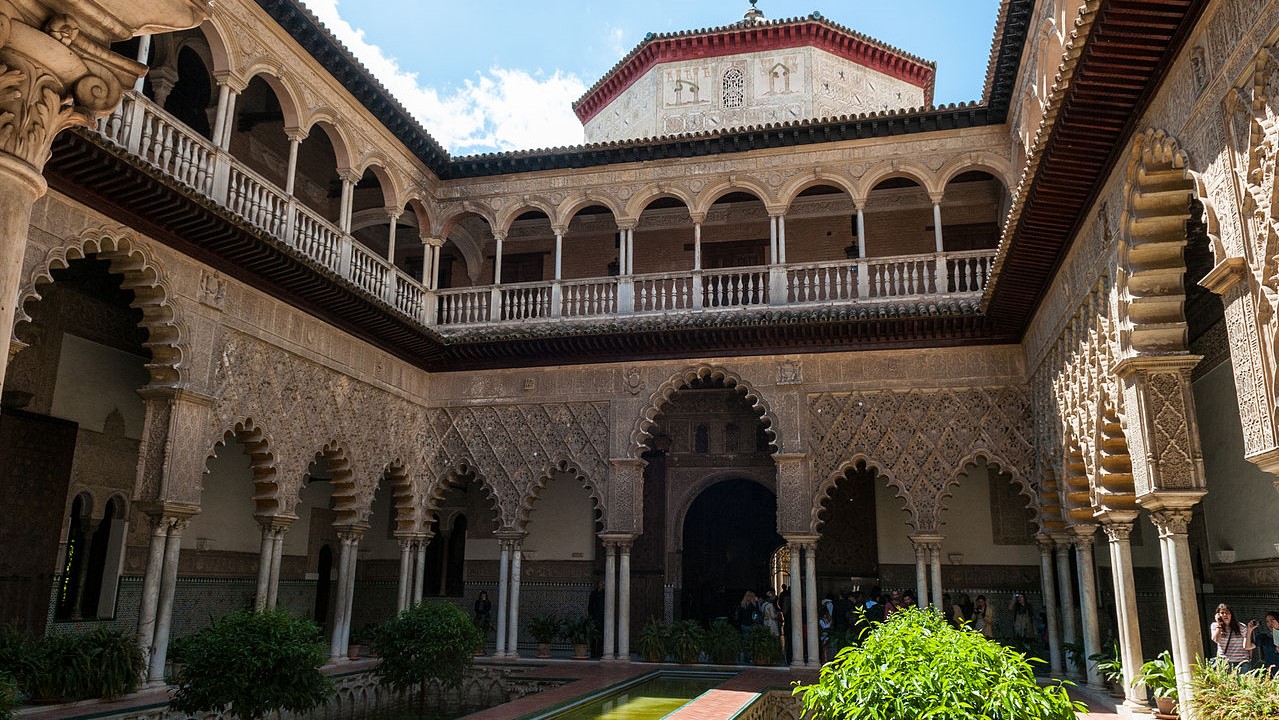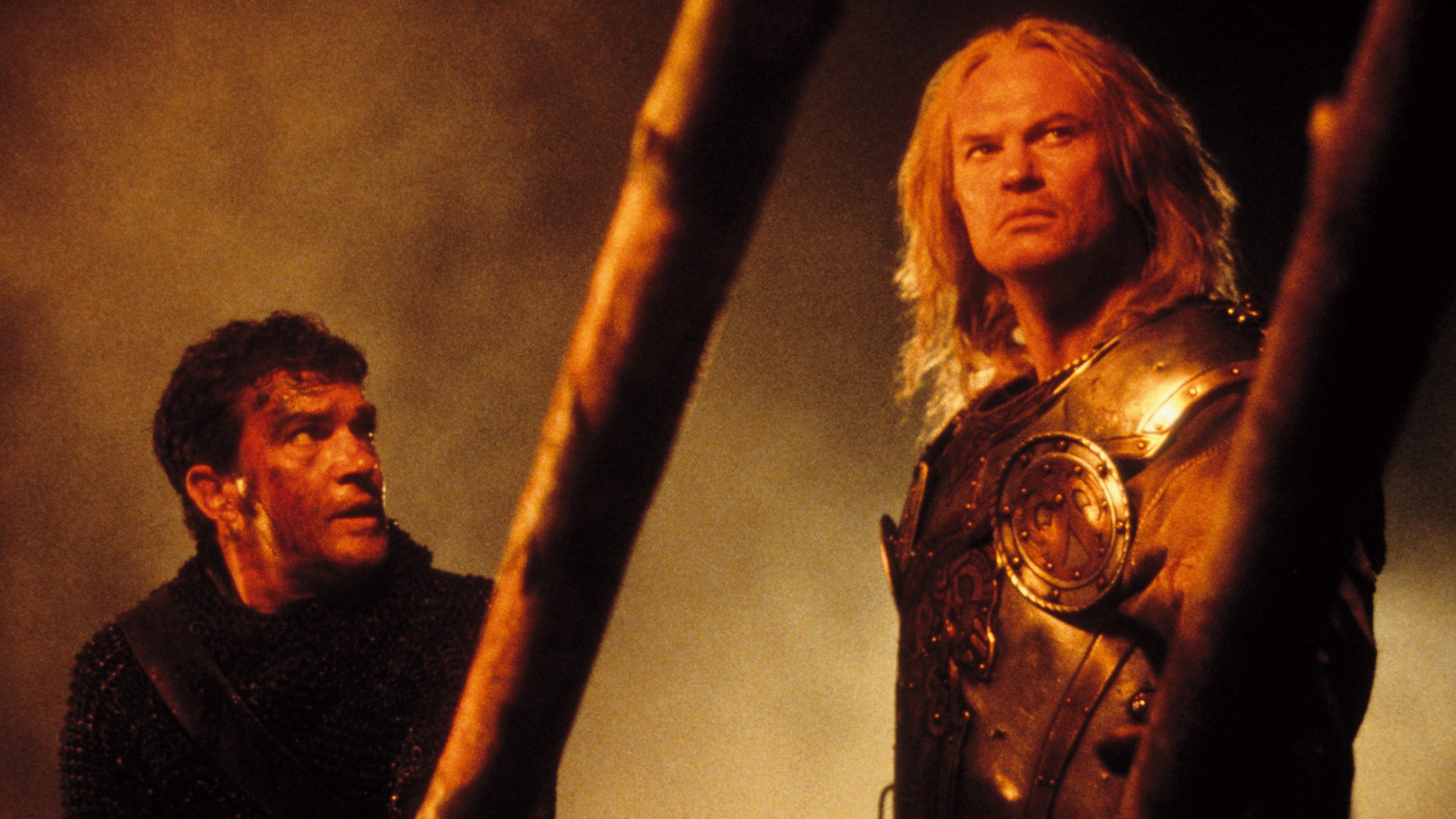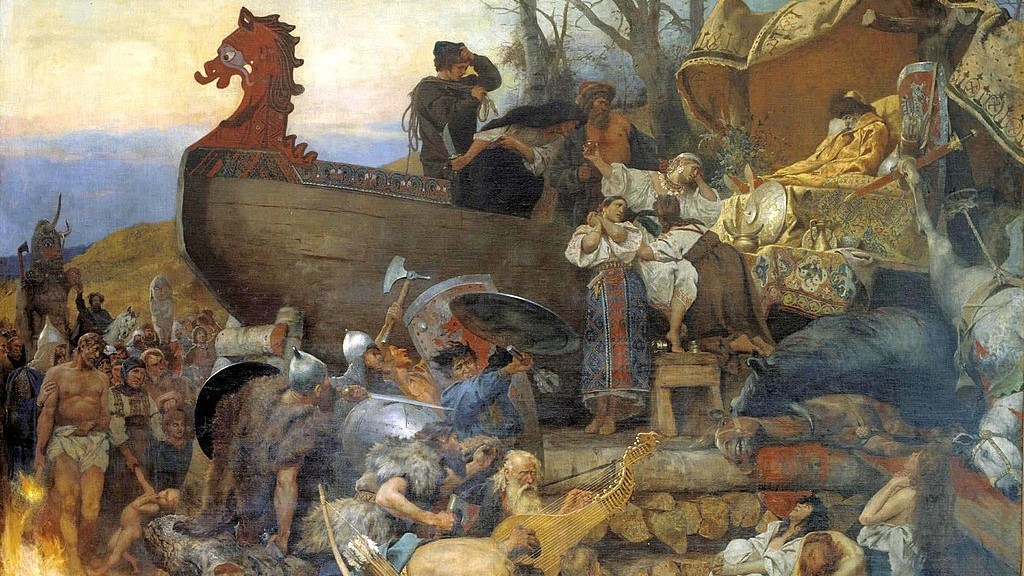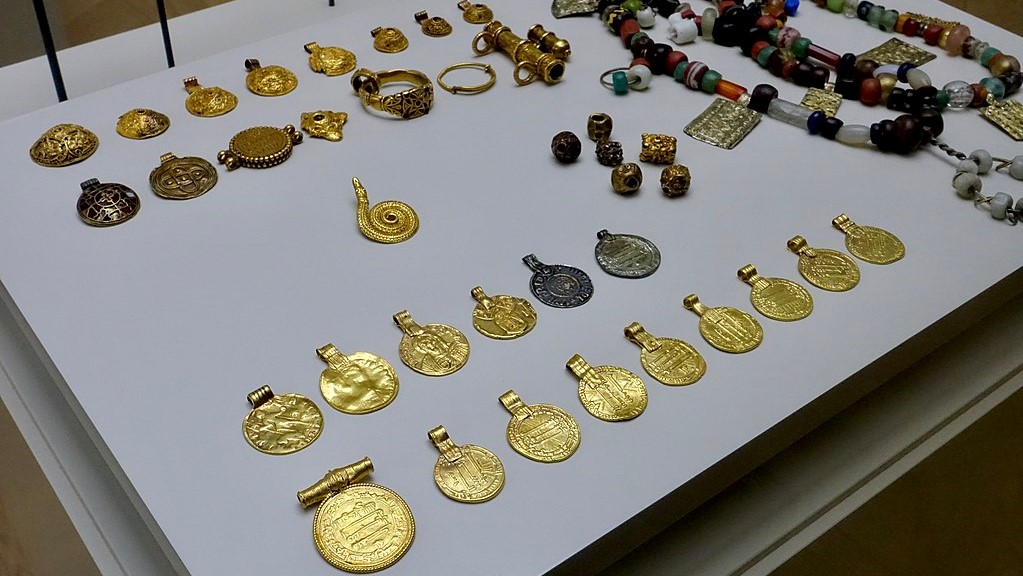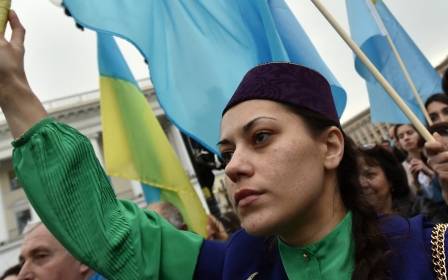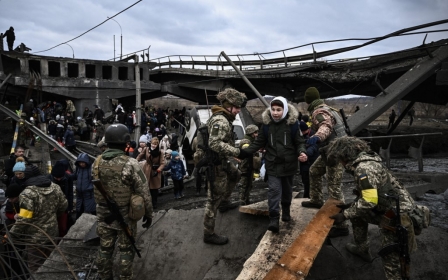Vikings, human sacrifice and bad hygiene: Early Islamic descriptions of Russia and Ukraine
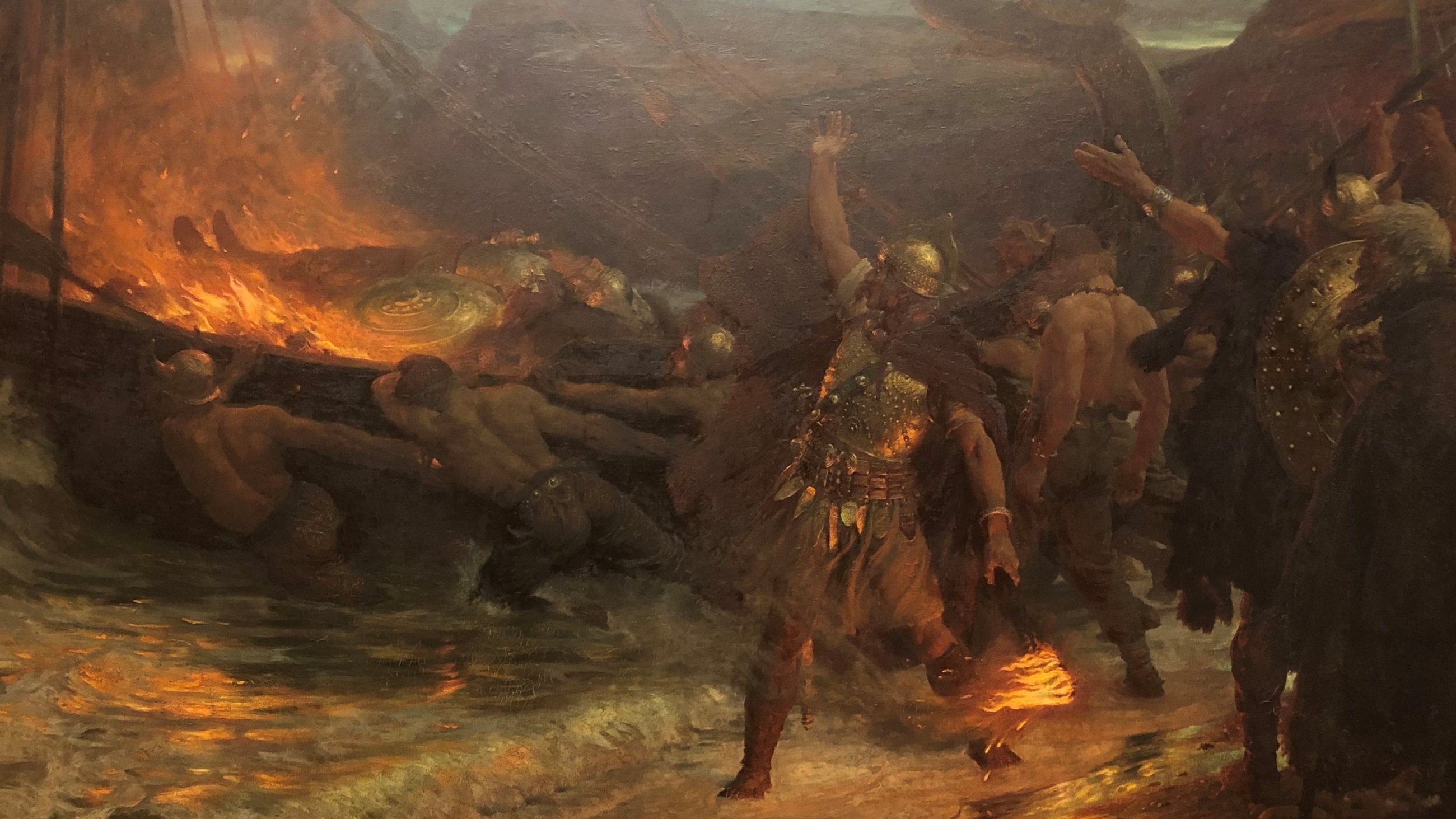
Editor’s note: The excerpts and accounts found in this article are based on translations of works by Ibn Fadlan and other Muslim writers published in "Ibn Fadlan and the Land of Darkness: Arab Travellers in the Far North" (Penguin Classics).
By the time the Arab chronicler Ahmed ibn Fadlan was born in the late 9th century, Muslim dynasties such as the Umayyads and the Abbasids ruled over territories stretching from Morocco in the west to much of Central Asia in the east and north.
Geographic barriers, as much as rival political entities, were the biggest impediments preventing Islam's further spread.
Vast expanses of desert prevented military adventurism north of Central Asia, while the Byzantine Empire had managed to fend off Arab attempts to reach the Black Sea and the lands that lay beyond it.
Notwithstanding the lack of direct political control, Muslim rulers were keen to establish relationships with these northern areas, both in the hope of spreading Islam through proselytisation and establishing trade routes.
It was with those objectives in mind that Ibn Fadlan set off on his journey to the north, covering an area that now includes Russia and Ukraine.
While those states are modern creations, the Arab writer's visit coincided with the establishment of the fledgling political entities that would give rise to both.
Encountering the ‘Rus’
Between the 7th and 10th centuries, a people most scholars consider to be Vikings moved from Scandinavia into the region of Europe between the Baltic and Black Seas.
They spoke the Germanic Old Norse language and the name "Rus", which they used to refer to themselves, likely originates from the Norse word for 'row men'.
As skilled boatmen and warriors, they were able to establish settlements along river systems across the region, sometimes using brute force to subdue people who already lived there, such as the Slavs.
Like their Christian neighbours to the north, Arabs learned about the Vikings the hard way.
A Viking raiding expedition in 844 CE targeted the Andalusian city of Seville, leading to seven days of killing and pillage.
According to later Arab accounts, the Norsemen's hubris got the better of them and they stuck around long enough for a Muslim relief force to defeat them in battle and set their ships alight.
The strengthening of coastal defences deterred future attacks on the scale of Seville but the Vikings had nevertheless established a place for themselves within the Muslim psyche.
Initial accounts referred to the raiders as majus, a term that for Muslims had become synonymous with "pagan", but by 880 CE, Arab writers were identifying the attackers with the Old Norse-origin word Rus.
Ibn Fadlan would encounter a people he called Rus during his journey, which saw him travel along the Volga River in what is now Russia.
The word "Russia" is directly connected to the word Rus and Russian nationalists consider their state the main political descendant of the states founded by the Rus people, such as those encountered by the Abbasid chronicler.
In the late 9th century, the Norse Prince Rurik established the Kievan Rus principality based in Ukraine's modern-day capital. The city was the political centre of a large multi-ethnic federation of states, in which a Norse elite ruled over a largely Slavic and Baltic population.
Eventually, that ruling class would be assimilated into Slavic culture, adopting the Orthodox Christian religion and the Old East Slavic language, from which Russian, Belarusian and Ukrainian are descended.
Habits and rituals
Ibn Fadlan's writings are useful for what they tell us about this embryonic stage in the creation of Ukrainian and Russian identities and also for capturing some of the most detailed available descriptions of Viking traditions.
To a modern reader and for academics, the Abbasid chronicler's sober and dispassionate descriptions of Rus rituals, as well as his willingness to extol the virtues of the people he encounters, add credibility to the grisly events he recounts.
Describing the attractiveness of the men he met, Ibn Fadlan writes: "I have never seen bodies more perfect than theirs. They were like palm trees."
But as impressed as he was by their physiques, there was plenty to disgust the Arab traveller, not least their hygiene habits.
They were the "filthiest of God's creatures", he tells us, and their habits included not cleaning themselves after answering the call of nature or having sex.
Fans of the TV show Vikings have Ibn Fadlan to thank for providing producers with knowledge of many of their rituals, although some of the rites practised by the people he met could have been borrowed traditions from neighbouring Central Asian peoples rather than being Scandinavian in origin.
One such ritual involves the performing of ablutions with a communal bowl of water, in which the contents of the previous person's nose and throat would have been emptied.
By far the most interesting passage in the Arab writer's chronicle is his description of a Rus noble's funeral, a version of which is also depicted in the show.
Ibn Fadlan writes that "when a great man dies, the members of his family say to his slave girls and young slave boys: 'which of you will die with him?' One of them replies: 'I will'."
What follows is a ghastly and drawn-out ritual witnessed by Ibn Fadlan firsthand and described by him without a hint of emotion.
The woman who volunteers is first tended to by fellow slaves, dressed in fine clothes and jewellery, symbolically washed, and spends the days until the funeral drinking and singing.
On the day of the funeral, the body of her master is placed on a boat anchored next to a riverbank along with offerings, such as alcoholic beverages, fruits, and herbs, as well as sacrificed cows, dogs, horses, and chickens.
In the lead-up to the sacrifice, members of her late master's entourage take turns ritually raping the woman, as a tribute to the friend who has passed away.
Before the final brutal act, the woman is stripped of her jewellery, made to drink an alcoholic liquid, and bids the onlookers farewell.
Six men and an old woman, who Ibn Fadlan calls the "Angel of Death", then enter the boat's pavilion where the slave woman is made to lie next to her master.
Two men hold down her feet and another two hold down her hands, as the old woman places a cord around the younger woman's neck.
Funeral attendees outside the boat bang on their shields to drown out the slave's cries as she is killed by both strangulation and stabbing.
After the sacrifice, the boat is set alight and is consumed by flames helped by "violent and frightening winds".
Further violence and interest in Islam
The Rus who met Ibn Fadlan seem to have shown a degree of cordiality to their Arab visitor and it is likely that such goodwill would have extended to other visitors, such as merchants, from the south.
Archaeologists have discovered troves of Arabic coins in Viking burial sites as far north as Sweden and Norway with the Rus buying textiles and metals from their southern visitors and selling honey, animal ivory, and slaves in return.
Despite such peaceful interactions, violent confrontations between Muslims, Christians, and the Rus were also recorded by Middle Eastern chroniclers.
The Persian philosopher Miskawayh describes an attack by the Rus on the Azerbaijani town of Barda in 943CE.
"They are a formidable nation, the men huge and very courageous," he writes, adding: "They do not recognise defeat. No one turns back until he has killed or been killed."
The people of Barda are said to have resisted, despite Rus warnings not to, resulting in a massacre and the taking of 10,000 men, women, and children as captives.
Another chronicler, the 10th-century Arab historian Masudi, describes a series of Rus raids on the Azerbaijani side of the Caspian coast, which included the massacre of "thousands of Muslims" and ends with the eventual defeat of the Rus by a combined force of Muslims and Christians.
"The two sides fought for at least three days and God gave victory to the Muslims," he writes. "The Rus were put to the sword or drowned."
With the spread of Islam among Turkic tribes in Eurasia at the turn of the first millennium and the concurrent spread of Christianity around the Baltic Sea and Scandinavia, the Rus found themselves slowly moving away from their pagan roots.
For most the shift was towards Christianity but the Persian scholar Sharaf al-Zaman Marwazi records one instance where a group of Rus dissatisfied with the Christian prohibition on raiding, converted to Islam.
In another widely referenced report, the grand prince of the Kievan Rus, Vladimir the Great, sends out a delegation to a neighbouring Turkic Muslim ruler to inquire about the Islamic faith.
The religion is rejected by Vladimir, who is put off by its prohibition on alcohol.
"Drinking wine is the joy of all Rus," he says.
This article is available in French on Middle East Eye French edition.
Middle East Eye delivers independent and unrivalled coverage and analysis of the Middle East, North Africa and beyond. To learn more about republishing this content and the associated fees, please fill out this form. More about MEE can be found here.


